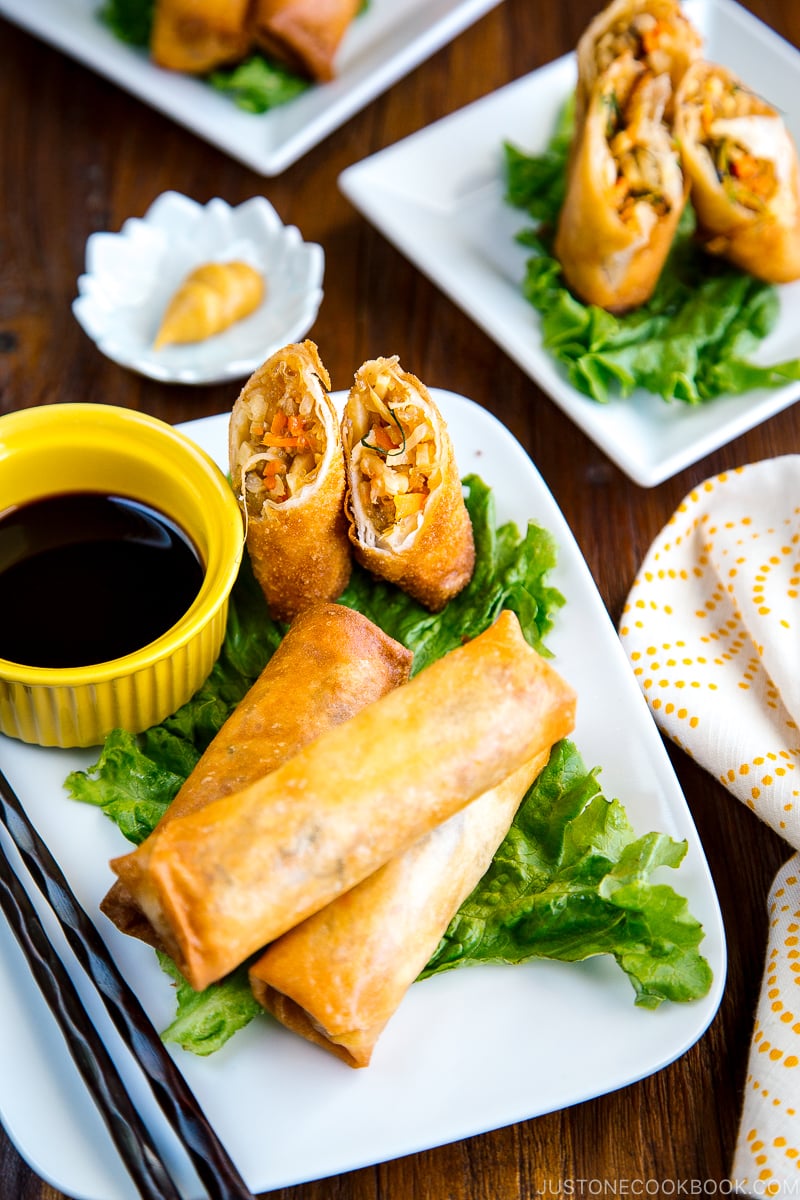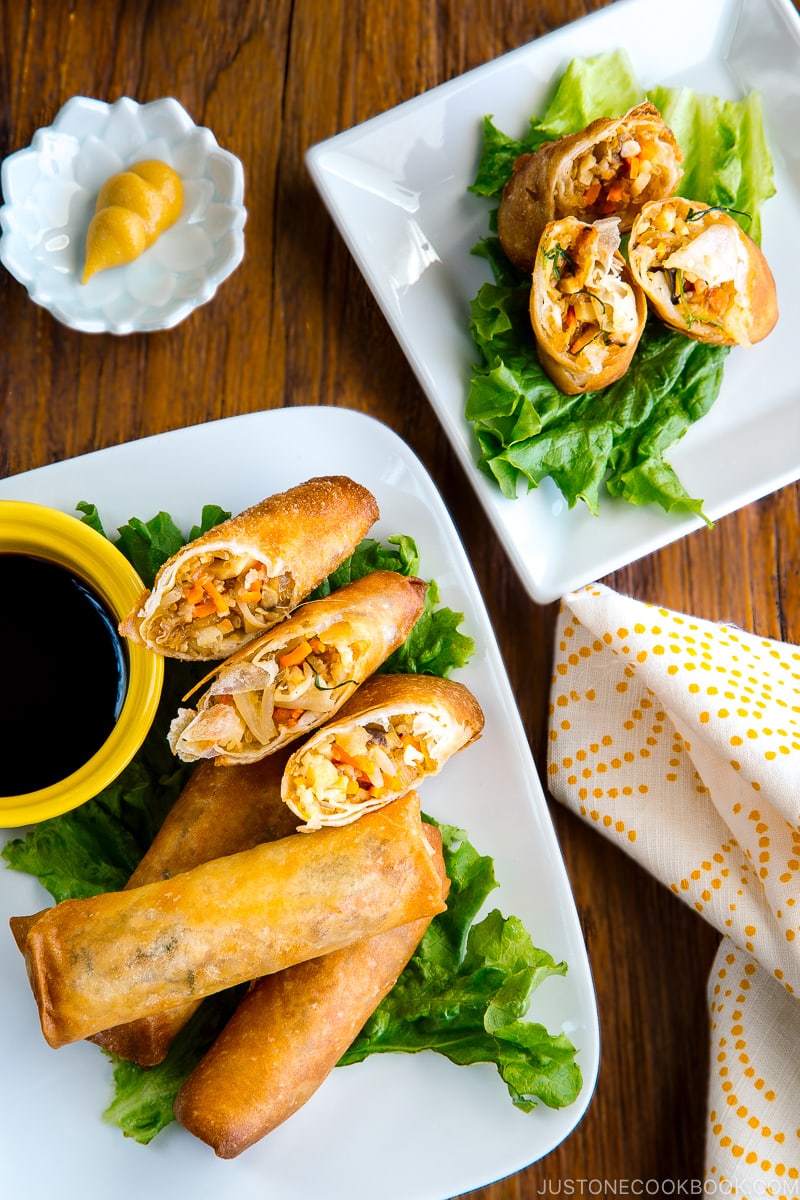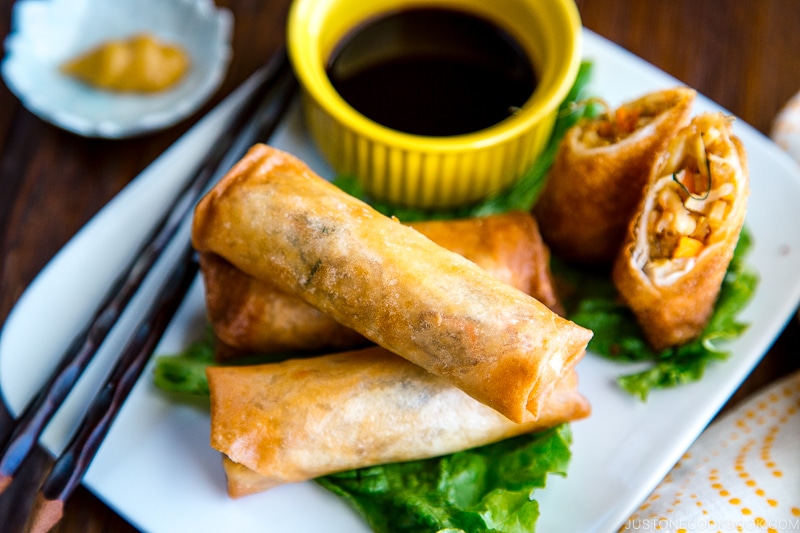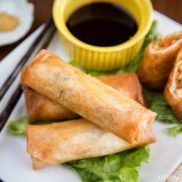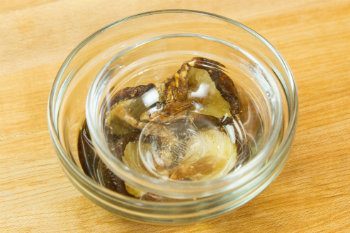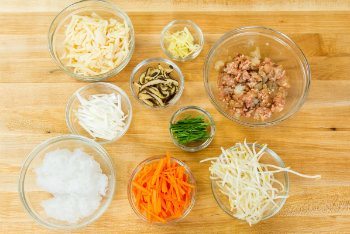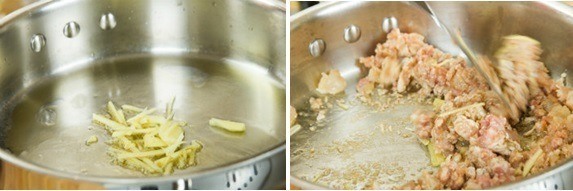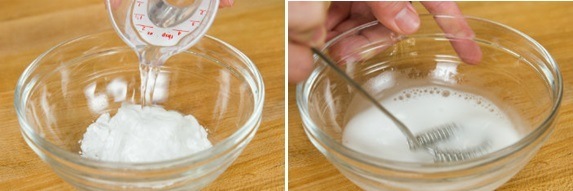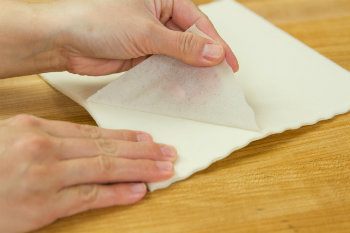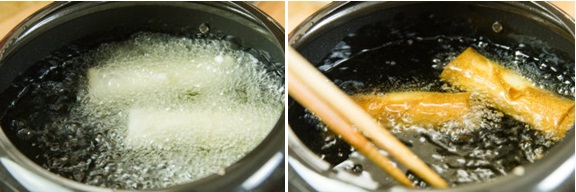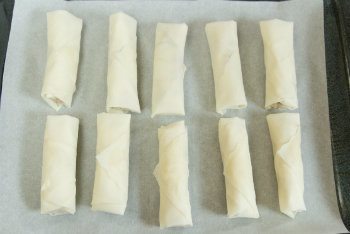Harumaki or Japanese spring rolls are a very popular food in Japanese home cooking. They’re a frequent side dish for a home cooked meal or a bento lunch. While each family makes them slightly different, typical ingredients include some type of meat or shrimp, carrot, shiitake mushrooms, and bamboo shoots. Today, I’ll show you how I make my tasty Harumaki recipe. I learned it from my mom using her signature recipe that includes 10 ingredients for the filling. It’s highly customizable though, so feel free to use my recipe as a starting point for your spring roll journey!
What is Harumaki?
In Japan, we call this dish harumaki (春巻き), a direct translation of “spring rolls” in Japanese. They are often called egg rolls and the names are used interchangeably. Harumaki were originally introduced to Japan by the Chinese and later adapted to Japanese tastes. Found in East Asian and Southeast Asian cuisines, the basic format for spring rolls is essentially the same. A savory filling is wrapped in a flour-based pastry sheet and deep-fried until the outer shell is crispy and golden brown.
Ingredients You’ll Need for Harumaki
My mom’s signature harumaki includes three types of protein—shrimp, ground pork, and chicken tenders. Feel free to customize your filling ingredients to suit your tastes and what you have on hand.
harumaki (spring roll) wrappers – make sure to use Japanese thin spring roll wrappers; plus flour and water for rolling and neutral oil for deep-frying dried shiitake mushrooms – plus water to rehydrate; save the soaking liquid (shiitake dashi) shrimp chicken tenders ground pork for the marinade – soy sauce, sake, and potato starch or cornstarch dried cellophane glass noodles (harusame) boiled bamboo shoots carrots bean sprouts for the aromatics – ginger knob, Tokyo negi (long green onion), and garlic chives to cook the filling – toasted sesame oil to season the filling – shiitake dashi (from soaking the dried shiitake), soy sauce, Diamond Crystal kosher salt, and freshly ground black pepper for the slurry – potato starch and water
How to Make Harumaki
Customize Your Harumaki
Change up the proteins and vegetables: It’s up to your preference what ingredients you add to your filling. You don’t have to include all 10 ingredients that I used. Pick a couple of your favorites or experiment with fresh seasonal ingredients. You could also make vegetable spring rolls with baked tofu for the protein. Make them bigger or smaller: The only difference between our recipes is that my mom’s rolls are about 1.5 times wider than mine. Growing up, I had trouble picking up her harumaki with chopsticks to eat them, so I made my harumaki similar in size to a typical Chinese spring roll. Switch the dipping sauce: We typically serve Japanese harumaki with a combination of soy sauce and rice vinegar and optional Japanese karashi mustard. Depending on the filling, you may want to change the dipping sauce.
Wish to learn more about Japanese cooking? Sign up for our free newsletter to receive cooking tips & recipe updates! And stay in touch with me on Facebook, Pinterest, YouTube, and Instagram.
